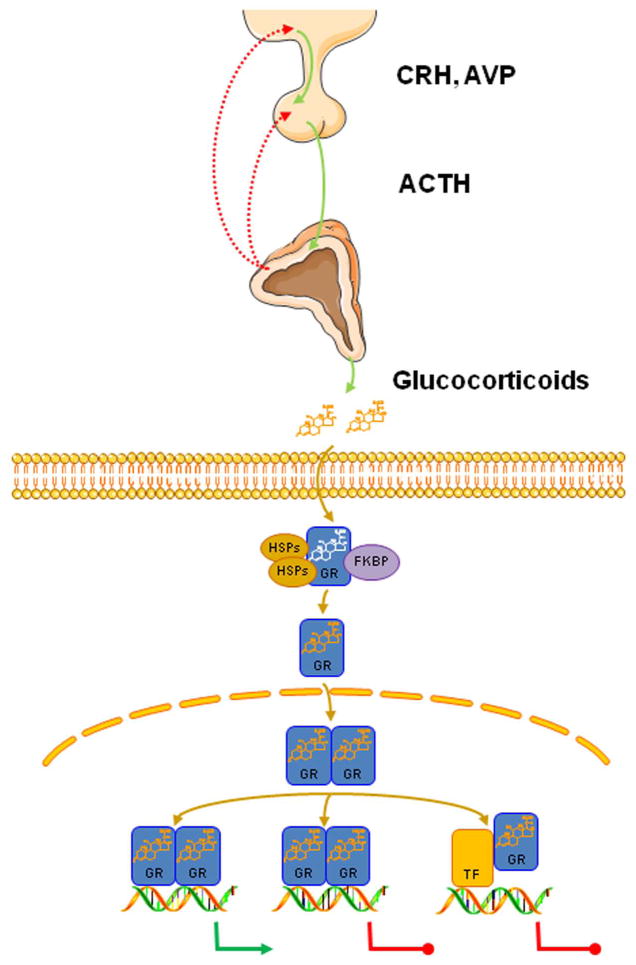Figure 1.
The neuroendocrine hypothalamic–pituitary–adrenal (HPA) axis. The HPA axis consists of the paraventricular nuclei (PVN) located in the hypothalamus, the pituitary gland, and the adrenal cortices. Upon stimulation, neurons of the PVN produce and release CRH and AVP into the hypophysial portal system. In turn, CRH and AVP induce the secretion of ACTH by the anterior pituitary gland. ACTH then reaches the zona fasciculata and stimulates the synthesis and release of glucocorticoids. In the target cell, glucocorticoids bind to the glucocorticoid receptor (GR), which dissociates from HSPs and immunophilins (such as FKBP), translocates to the nucleus, and interacts with the glucocorticoid response elements (GREs) of target genes as homo- or heterodimer, influencing the transcription rate of numerous genes in a positive or negative fashion. Alternatively, the GR can modulate gene expression by physically interacting with other transcription factors (NF-κB, AP-1, STAT5) influencing the expression of their target genes. CRH, corticotropin-releasing hormone; AVP, arginine vasopressin; ACTH, adrenocorticotropic hormone; GR, glucocorticoid receptor; HSP, heat shock proteins; FKBP, FK506-binding protein. Figure 1 was prepared using image vectors from Servier Medical Art (www.servier.com), licensed under the Creative Commons Attribution 3.0 Unported License (http://creativecommons.org/license/by/3.0/).

